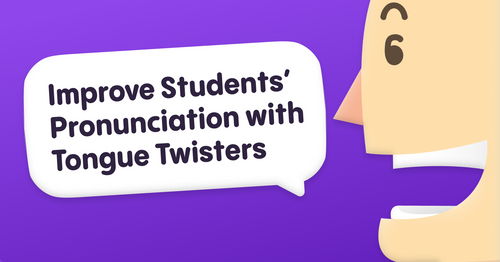Teaching English as a second language (ESL) can be challenging for both the teacher and the students, but incorporating phonics into language lessons can make the learning process more fun and engaging. In this article, we will explore :
- what phonics is and why it is important in ESL,
- effective techniques for teaching phonics to ESL students,
- how to improve pronunciation through phonics,
- fun phonics activities,
- how to teach phonics to ESL students online.
What is Phonics and Why is it Important in ESL?
Understanding Phonics
Phonics is an approach to teaching reading and writing that involves teaching students the association between sounds and the letters that represent them. It is a systematic way of teaching the building blocks of the English language. Phonics teaches learners to read by helping them learn to decode words by sounding them out, rather than just memorizing them.
Importance of Phonics in ESL Learning
Phonics is a critical aspect of language acquisition because it helps students learn how to read and write words accurately and quickly. Many ESL students come from backgrounds where the language they speak at home is very different from English. By teaching phonics to ESL students, teachers can help bridge the gap between the students' home language and English, making it easier for them to learn English.
How Phonics Help English Language Learners
Learning phonics helps students to recognize the connection between the sounds of English words and their written forms. It also helps them understand how English spelling and pronunciation work and gives them a foundation for future reading and writing skills. By using phonics, ESL students can quickly start to read and write in English, which helps them improve their overall language skills and gain confidence in their ability to learn the language.
How to Teach Phonics to ESL Students?
Effective Techniques to Teach Phonics to ESL Students
There are several effective techniques to teach phonics to ESL students:
Introduce the sounds
Begin by introducing the individual sounds of the English language. Focus on the most common sounds first, such as short vowels, long vowels, consonant sounds, and digraphs (two letters representing a single sound, e.g., "th" in "that"). Use visual aids, gestures, and examples to demonstrate each sound.
Use phonics charts
Utilize phonics charts that display the sounds and corresponding letter combinations. Show students how specific letters or letter combinations make different sounds. Practice identifying the sounds and matching them to the correct letters or groups of letters.
Word-building activities
Engage students in word-building activities to help them understand the relationship between sounds and letters. Provide word cards with different phonetic patterns (e.g., CVC words like "cat," "sit") and have students arrange the cards to form new words. This activity reinforces their understanding of phonetic patterns.
Word families
Teach word families (also known as phonograms or word chunks), which are groups of words that share a common sound or letter combination.
For example, the "at" family includes words like "cat," "bat," "mat," etc. Teaching word families helps students recognize patterns and apply their knowledge to new words.
Multi-sensory activities
Incorporate multi-sensory activities to enhance phonics learning. For instance, have students trace letters on sandpaper or in the air while saying the corresponding sound. Use tactile materials like letter tiles or magnetic letters for hands-on manipulation. These activities reinforce learning through visual, auditory, and kinesthetic modalities.
Phonics games
Make learning phonics enjoyable by incorporating games. Engage students in activities like phonics bingo, word races, or phonics board games. These games make learning interactive and provide opportunities for students to practice their skills in a fun and engaging way.
Reading aloud
Encourage students to read aloud regularly. Provide them with decodable texts that contain words they can read using their newly acquired phonics knowledge. Practice reading in a one-on-one or small group setting, allowing students to receive personalized feedback and guidance.
Dictation exercises
Conduct dictation exercises where you pronounce words or sentences, and students write them down. Focus on specific phonetic patterns or sounds, and gradually increase the complexity of the dictation exercises as students progress. This activity helps develop listening skills and reinforces the connection between sounds and letters.
Contextualize phonics
Connect phonics instruction to real-life situations and reading materials. Encourage students to identify phonetic patterns and apply their knowledge while reading signs, labels, or age-appropriate books. This application of phonics in authentic contexts reinforces their learning and promotes reading comprehension.
Review and reinforcement
Regularly review previously learned phonics concepts to ensure retention. Incorporate periodic review activities, quizzes, or assessments to assess students' progress and identify areas that require additional support.
Materials and Lesson Plans for Teaching Phonics to ESL Students
There are many resources available online and in print for teaching phonics to ESL students.
At Allright.com teachers can find comprehensive lesson plans and materials that focus on different aspects of phonics instruction, such as vowel sounds, digraphs, and blends. ESL teachers can also use ready-made lesson plans and materials tailored to their students' needs by using online resources and educational tools, an authentic platform for students.









